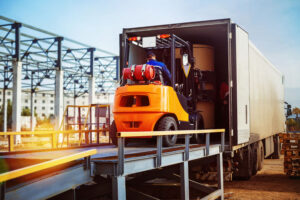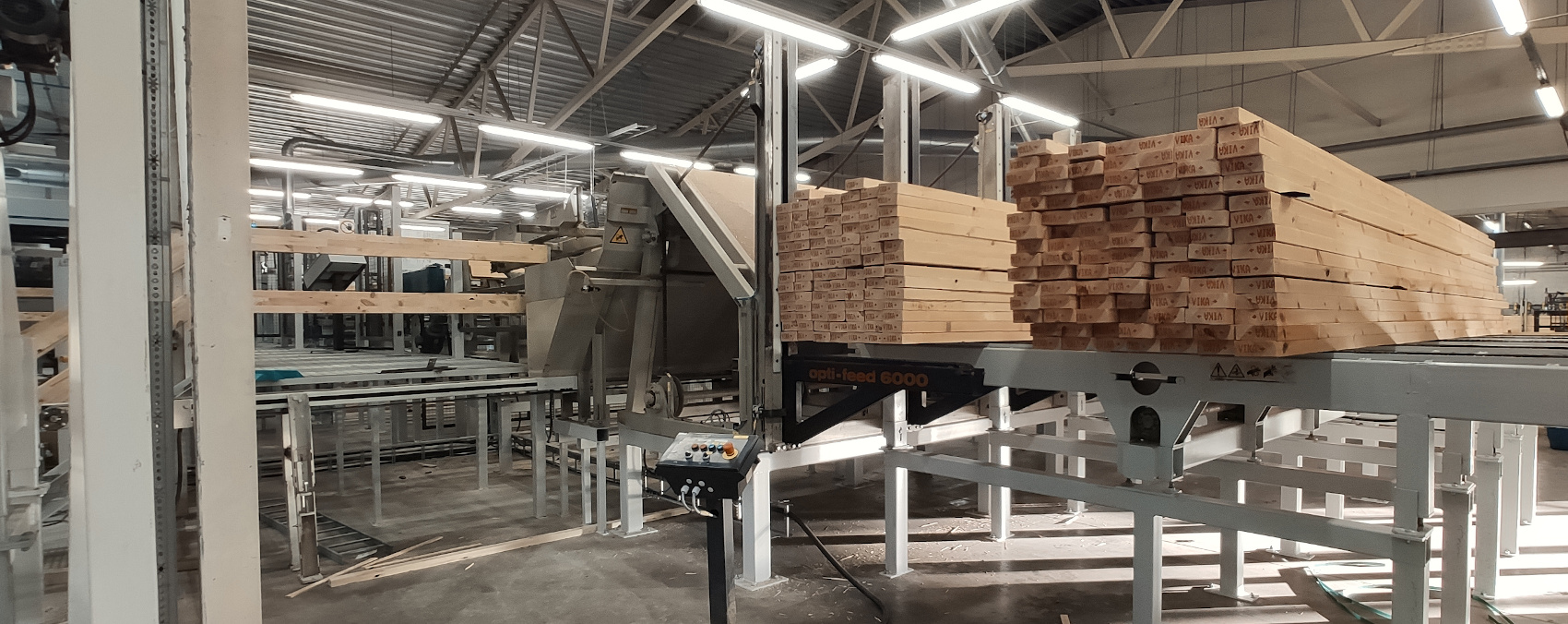Atemix Grupp in collaboration with Eliko, a company specialised in the development of positioning systems, is developing an RTLS (real-time locating system) solution that combines UWB (ultra wideband), GNSS (GPS-based positioning) and digital twin technologies to enable real-time tracking of raw materials, semi-finished products, and finished products.
The solution under development is one of the world’s first RTLS systems that combines both UWB and GGNS positioning, allowing users to locate objects in both indoor and outdoor areas. Most of the solutions currently on the market are only able to offer one solution or the other. Our RTLS positioning network, on the other hand, combines both digital warehouse (and outdoor area) monitoring and production process monitoring.
How does the RTLS system work?

The RTLS system being developed makes forklifts ‘smart’. Namely, the locating of products relies on two tags that are attached to the forklifts, which enable each truck to be located and which transmit signals to ‘anchors’ about the movement of goods.
These two tags make it possible to track the movement of a forklift, as well as the raising and lowering of its fork, which provides the positioning server with sufficient data to understand where a product is picked up from and where it is placed. This allows you to know exactly what the forklift is doing at all times. Using this precise forklift locating capability, we can create a system where there is no need to supply products with any additional tags.
All of the data is stored in a digital twin, which is effectively a digital copy of the warehouse and outdoor area. More specifically, the digital twin is a database of product locations that enables the driver to find the products later with little effort.
How is the RTLS system of Atemix and Eliko different from competing systems?
Our competitive advantage is the ability to combine UWB and GGNS positioning into one tag and a single positioning network. This means that positioning need not be limited to a confined area as it is in most current solutions; instead, products may be located across a wider area and even outside of storage facilities.
This is a wonderful solution, for example, for the timber industry and manufacturers of construction materials, who normally need to bring in raw materials from outdoors and then move the finished product out again.

What are the commercial benefits of the RTLS system for clients?
With RTLS, you will always know where your raw materials are located and can find the optimal route to reach it. Moreover, RTLS can help you establish whether the right goods were loaded onto your clients’ trucks.
RTLS helps optimise forklift operation and reduces unladen journeys. The forklift driver does not have to search desperately for the right goods, but can get all of the information needed to find the raw material or product from the waybill. In the case of production orders, with combined RTLS and production process monitoring, the forklift driver receives a list of all of the raw materials that are needed along with the order in which and the time when they need to be fetched. All in all, this improves the efficiency of both warehouse management and production processes.
What challenges are you are facing in the development of the RTLS system?
They say that the more complex the problem you are solving for your clients, the more value you create. In the development of our positioning network there are also some technical challenges, which will need to be overcome to reach a workable solution.
One of the biggest of these challenges is the mapping of truck movement patterns (in order to understand which movements actually correspond to changes in the location of goods). Another challenge we will be facing will be how to interface the system with the dozens of ERP (enterprise resource planning) software applications currently on the market.
In addition, we will need to make sure that the standard solution is sufficiently functional to meet the basic needs of industrial and production enterprises without further development.
What is the future of RTLS systems?

Currently, our development activities are focused on applying the system to tracking changes in the locations of stationary objects – which means finished products, semi-finished products, and raw materials – through monitoring the movement of forklifts. Eventually, however, we want to give the system a complete picture of all production processes – so that tags could be used to monitor everything (including moving objects) –, to bring this complete picture into the digital twin.
In the more distant future, the positioning network should pave the way towards autonomous robots, which, thanks to the digital twin of production processes, will be able to locate raw materials, semi-finished products, and finished products themselves, as well as to calculate what, when, and where it is needed.
At present, however, the forklift-locating RTLS system is an important intermediate step towards more efficient production and warehouse management and a significant step forward from the systems in use today.
Atemix – a strategic development partner for businesses
We are equipped to offer industrial enterprises a complete service from consulting to implementation. Through integrated and functional software solutions combined with carefully designed and managed production processes, we can achieve true digitisation.
We have many years of experience and competence, a capable team, and skilled partners. Thanks to this we can safely say that we are able to help any industrial enterprise reach a new level.
Contact us to find out how we can digitise your production processes.
Want to make your production more effective?
Atemix will get every factory into their best shape and help them keep it.
